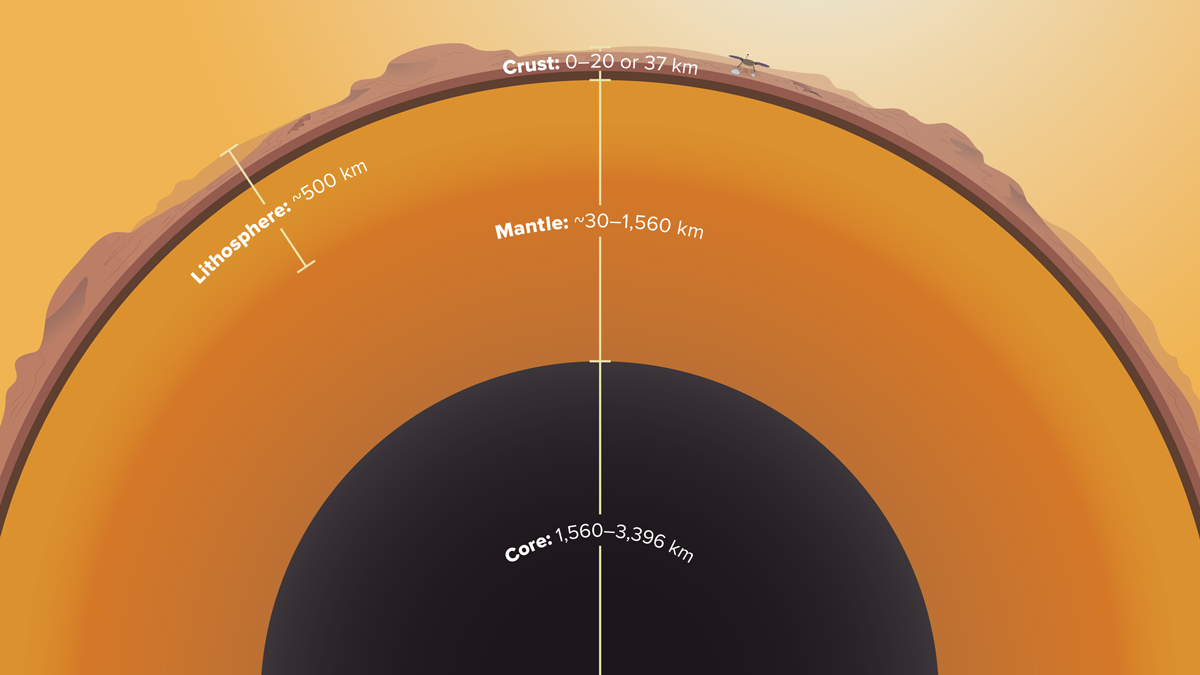With more than 700 marsquakes detected so far, scientists have a clearer picture of the interior structure of Mars than they ever had before. That picture shows that Mars has a liquid metal core, a thick mantle with a rocky layer above a more fluid layer, and a crust that is proportionally thicker than Earth’s.
The seismometer on Mars, called Seismic Experiment for Interior Structure (SEIS), is part of NASA’s Interior Exploration using Seismic Investigations, Geodesy and Heat Transport (InSight) lander. The quakes SEIS can detect are subtler than those detectable on Earth because Mars is free of the seismic noise generated by Earth’s oceans and thicker atmosphere. The instrument has been monitoring Mars for quakes since it landed in November 2018.
When seismic waves travel from their points of origin to a seismometer on the surface, the ways they reflect and bend reveal the interior structure of a planet. “What we’re looking for is an echo,” said Amir Khan of ETH Zürich. “We’re detecting a direct sound—the quake—and then listening for an echo off a reflector deep underground.” Every new quake is another brushstroke that paints a portrait of a planet’s interior.
—Kimberly M. S. Cartier, Staff Writer
This news article is included in our ENGAGE resource for educators seeking science news for their classroom lessons. Browse all ENGAGE articles, and share with your fellow educators how you integrated the article into an activity in the comments section below.


